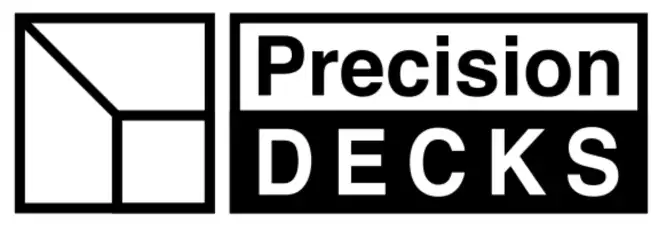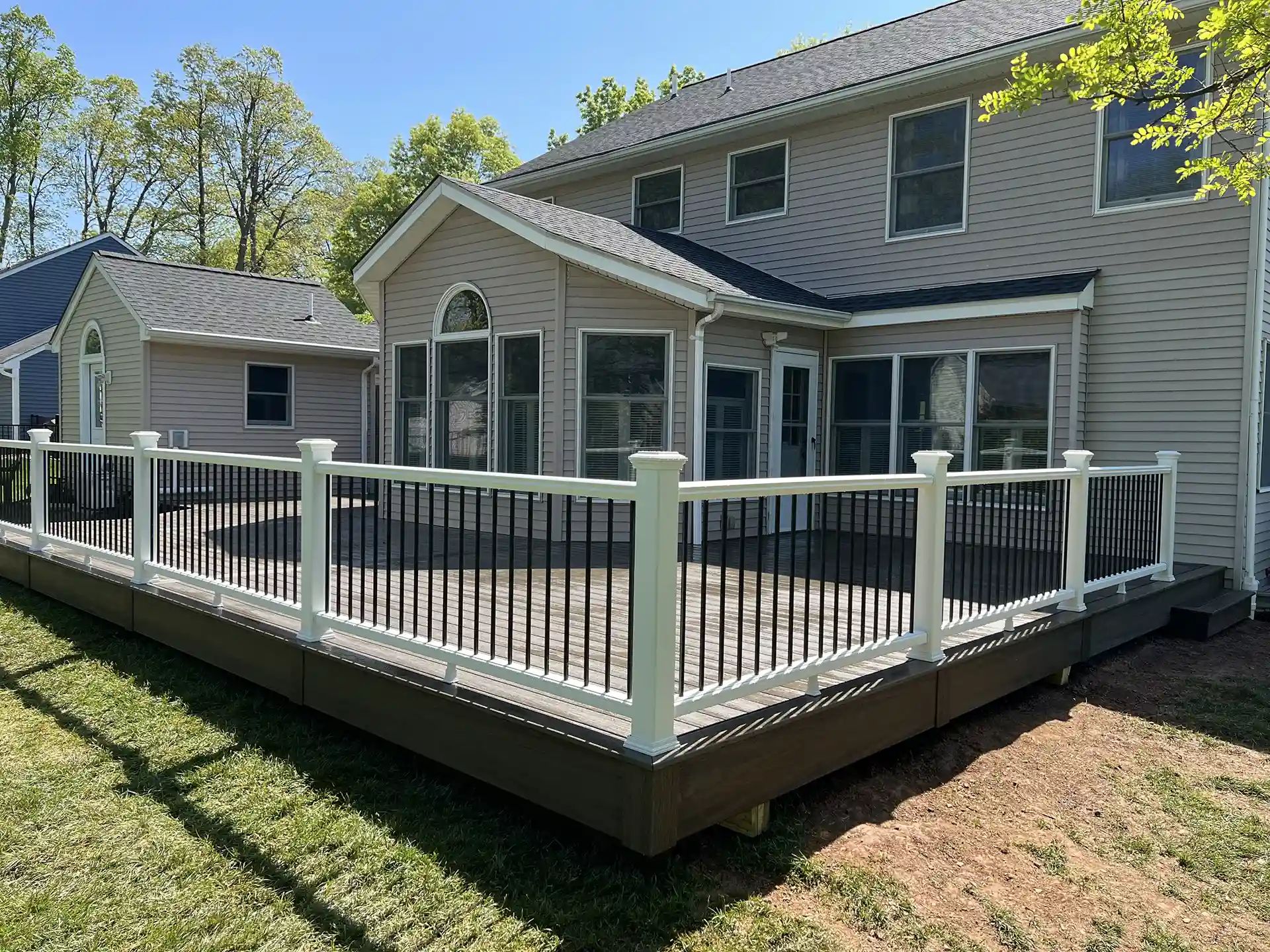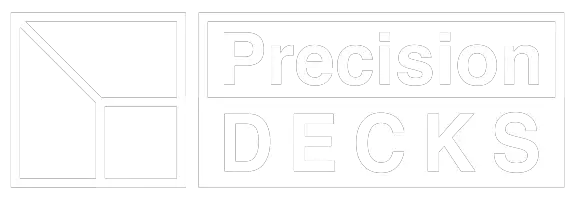Curved and circular decking catches the eye. The smooth, flowing lines break away from standard straight-line designs, giving outdoor spaces a unique, stylish look. These decks often wrap around pools, patios, or gardens, blending seamlessly with natural landscapes. The rounded edges create a softer, more welcoming appearance than sharp, angular lines.
While curved decks look impressive, building them is more complex and expensive than many homeowners expect. Let’s explore why curved decks stand out, the challenges of constructing them, practical alternatives, and how costs and materials play a key role in decision-making.
What Makes Curved Decks Unique?
Curved and circular decks stand out from typical straight-edged designs. Instead of sharp corners and rigid lines, they feature smooth arcs that follow natural shapes. This unique structure makes curved decks visually appealing and suitable for various outdoor settings.
Why Homeowners Choose Curved Decks:
- Fluid Integration: Curved decking naturally blends with features like gardens, patios, or pools, creating a cohesive and organic look.
- Dynamic Aesthetic: Compared to rectangular layouts, curved decks feel softer and more dynamic, giving a sense of movement, almost like a winding path guiding you through the space.
- Functional Appeal: Adding elements like built-in seating or curved planters enhances usability and visual interest.
- Natural Extension: The rounded lines soften the overall appearance, making the deck feel like an organic part of the landscape.
- Focal Point Potential: A curved deck becomes a standout feature in the yard when paired with custom railings and steps.
Why Building Curved Decks Is So Challenging
While curved decks look impressive, building them is significantly more complex than standard deck construction. The primary challenge lies in the framing process, which requires precision and specialized techniques.
Framing a Curved Deck:
- Unique Structure: Unlike straight-line decks, which use a simple grid pattern, curved deck framing involves beams and joists that follow an arc.
- Precision Cutting: Supports must be custom-cut to match the curve’s radius, requiring accurate measurements to maintain stability.
- Complex Calculations: Even a small error can throw off the entire structure, leading to uneven support and potential safety issues.
Kerf Cutting Technique for Wood:
- Purpose: Makes wood beams flexible enough to bend gently.
- Method: Small, closely spaced cuts are made along the beam’s length to allow slight bending.
- Limitations: Suitable only for gentle curves, as it weakens the wood, making it less reliable for heavy loads or areas with high foot traffic.
Heat Bending for Composite Decking:
- Preferred Material: Most curved decks use composite materials like Trex, which can bend when heated.
- Heating Process: Builders use heat blankets to warm the boards to about 300°F, making them pliable.
- Shaping: Once flexible, the boards are placed in a jig to hold the desired curve while they cool and harden.
- Risks:
- Overheating can cause blistering or cracking.
- Underheating can make the boards lose their shape after cooling.
- Skill Requirement: This technique requires experience and precise temperature control to avoid material damage.
Why Wood Isn’t Ideal for Curved Decking:
- Lack of Flexibility: Wood generally does not bend easily.
- Steam Bending Limitations: Wood can split or warp even when steamed, especially under stress.
- Composite Advantage: Composite remains preferred for curved deck construction due to its ability to bend without cracking.
Challenges with Curved Railings and Stairs
Curved railings and stairs further complicate the construction of a curved deck. Achieving consistent and safe designs requires specialized skills and tools.
Curved Railings:
- Precision Bending: Handrails need to follow the exact curve of the deck, often requiring custom fabrication or on-site bending.
- Installation Issues: Even minor alignment errors can result in gaps or uneven post spacing, compromising safety.
- Material Considerations: Flexible materials like aluminum or composite are preferred over rigid wood.
Curved Stairs:
- Complex Stringer Design: The stringers (support beams under the steps) must be cut precisely to maintain consistent height and depth while following the curve.
- Safety Concerns: Any mistake can lead to uneven steps, making the stairs unsafe or uncomfortable.
- Labor-Intensive Process: Cutting curved stringers requires advanced carpentry skills and careful planning.
Cost Factors of Curved Decking
Building a curved deck involves higher costs than a standard straight-line deck. Here’s why:
- Complex Framing: Curved deck framing requires custom-cut beams and joists. Unlike standard straight layouts, these beams need precise cutting to form the arc, which increases labor costs.
- Material Bending: Composite materials like Trex are preferred for curved decks because they can be heat-bent. The bending board process requires specialized equipment and expertise, adding to the project’s expense.
- Custom Railings: Curved railings and handrails are not standard. They often need to be fabricated specifically for the deck, significantly raising the price.
- Labor Intensity: Skilled labor is essential for ensuring the curves are consistent and structurally sound. Hiring experienced builders with the right tools is crucial, but it also drives up the cost.
- Permits and Inspections: Due to their complexity, curved decks might require additional inspections to ensure safety. Permit fees can vary, especially if the structure doesn’t fit typical code criteria.
Cost Comparison: Curved vs. Straight Deck
| Deck Type | Average Cost per Square Foot | Labor Costs | Special Requirements |
| Curved Deck | $40 – $60 | High (custom bending, skilled labor) | Heat bending, custom railings, precise framing |
| Straight Deck | $20 – $40 | Moderate (standard techniques) | Basic framing, standard railings |
Building Codes and Permits in Macon Township, MI
If you’re planning to build a curved deck in Macon Township, you must follow local codes and secure permits.
Key Points:
- Permit Requirements: A permit is needed for any deck attached to a structure or higher than 30 inches above grade.
- Application Process: Submit plans detailing the dimensions, materials, and framing methods.
- Inspection Stages: The deck must pass several inspections, from framing to completion.
Smart Alternatives to Curved Decks
Straight-line decks are practical and versatile while maintaining a strong visual appeal. Here’s a comprehensive look at practical alternatives that offer style and function without the challenges of curved construction:
Here’s the complete table of practical alternatives and design ideas for straight-line decks, including the embedded links, recommended materials, best use cases, and cost ranges.
Practical Alternatives and Design Ideas for Straight-Line Decks
| Alternative/Idea | Description | Recommended Materials | Best Use Cases | Cost Range per Sq. Ft. |
| Angled Decking Patterns | Create diagonal or herringbone patterns to break up the linear feel while keeping the structure efficient. | Composite decking (Trex, TimberTech) | Modern and dynamic designs | $25 – $45 |
| Multi-Level Decks | Add levels to create distinct areas for dining, lounging, or grilling. Works well on sloped or uneven terrain. | Pressure-treated wood, composite, PVC | Sloped yards, large outdoor living spaces | $30 – $60 |
| Integrated Planters | Built directly into the deck’s perimeter or railings, adding greenery without sacrificing floor space. | Composite, pressure-treated wood | Urban gardens, small decks | $15 – $35 (additional) |
| Built-In Seating | Permanent benches or seating walls that follow the deck’s edges, maximizing seating while maintaining a clean layout. | Composite, natural wood | Social areas, family gatherings | $20 – $50 (per linear foot) |
| Horizontal Cable Railings | Sleek, modern railings that maintain open views. Ideal for keeping sightlines and adding a contemporary touch. | Stainless steel cables, aluminum posts | Decks with scenic views, modern designs | $50 – $100 (per linear foot) |
| Glass Panel Railings | Transparent railings that preserve the view while adding safety. Ideal for decks overlooking landscapes or pools. | Tempered glass, aluminum frames | Elevated decks, poolside decks | $100 – $200 (per linear foot) |
| Lighting Integration | Use post cap, stair, and under-rail lighting to improve safety and highlight architectural features. | LED fixtures, solar lights | Nighttime use, safety-focused designs | $20 – $50 (per fixture) |
| Shade Structures | Incorporate pergolas or gazebos to create shaded areas without altering the deck’s shape. | Wood, vinyl, metal | Decks exposed to direct sunlight | $40 – $75 (per sq. ft.) |
| TimberTech AZEK Decking | Use low-maintenance, high-performance composite materials for a sleek, long-lasting deck surface. | PVC composite | High-traffic areas, modern outdoor living spaces | $50 – $80 |
| Pool Deck Extensions | Create seamless transitions between the pool and outdoor living areas with straight decking layouts. | Composite, slip-resistant materials | Poolside decks, relaxation spaces | $40 – $70 |
| Deck Remodeling | Upgrade existing decks with new materials, modern railings, or integrated lighting to revitalize the space. | Composite, pressure-treated wood, aluminum | Older decks in need of updates | $25 – $50 |
Curved and circular decks have a unique, flowing look that complements natural settings. While visually appealing, they are often expensive and complex to build, requiring specialized framing, materials, and custom railings.
Straight-line decks are more practical and versatile. They offer a range of design options, like angled patterns, multi-level layouts, integrated seating, and modern railings. These designs are easier to build, maintain, and customize, making them a wise choice for homeowners looking for style and function.
Ditch the Curves—Build Smarter!
If you’re looking to build a beautiful, practical deck, Premier Deck Builders can help. Get expert advice, quality craftsmanship, and customized solutions for your outdoor living space.
Request a Free Estimate and start planning your dream deck today!


